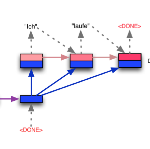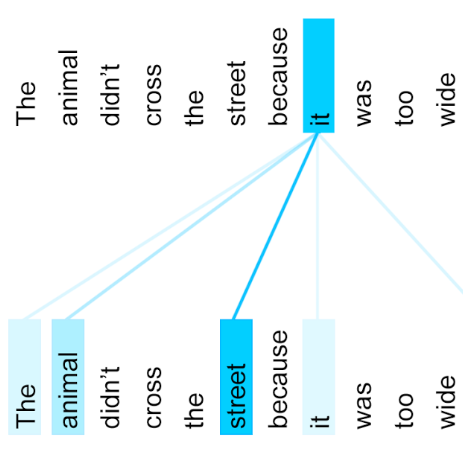Rising penetration levels of (residential) photovoltaic (PV) power as distributed energy resource pose a number of challenges to the electricity infrastructure. High quality, general tools to provide accurate forecasts of power production are urgently needed. In this article, we propose a supervised deep learning model for end-to-end forecasting of PV power production. The proposed model is based on two seminal concepts that led to significant performance improvements of deep learning approaches in other sequence-related fields, but not yet in the area of time series prediction: the sequence to sequence architecture and attention mechanism as a context generator. The proposed model leverages numerical weather predictions and high-resolution historical measurements to forecast a binned probability distribution over the prognostic time intervals, rather than the expected values of the prognostic variable. This design offers significant performance improvements compared to common baseline approaches, such as fully connected neural networks and one-block long short-term memory architectures. Using normalized root mean square error based forecast skill score as a performance indicator, the proposed approach is compared to other models. The results show that the new design performs at or above the current state of the art of PV power forecasting.
翻译:作为分布式能源资源,光电(住宅)光伏发电(PV)的渗透水平不断提高,对电力基础设施构成若干挑战。迫切需要高质量的一般工具,准确预测电力生产。在本篇文章中,我们提出一个监督的光电发电端到端预报深学习模型。拟议模型基于两个基本概念,这些概念导致在其他序列相关领域的深层次学习方法的显著改进,但在时间序列预测领域尚未实现:作为环境生成器的序列结构序列和关注机制。拟议模型利用数字天气预测和高分辨率历史测量来预测预测预测预测预测时间间隔的硬化概率分布,而不是预测变量的预期值。这一设计与共同基线方法相比,例如完全连接的神经网络和一街区长的短期记忆结构,具有显著的性能改进作用。将基于常态平均均匀预测技能评分作为一种业绩指标,将拟议方法与其他模型进行比较。结果显示,新设计是在或高于目前光电能预测状态的情况下进行的。




